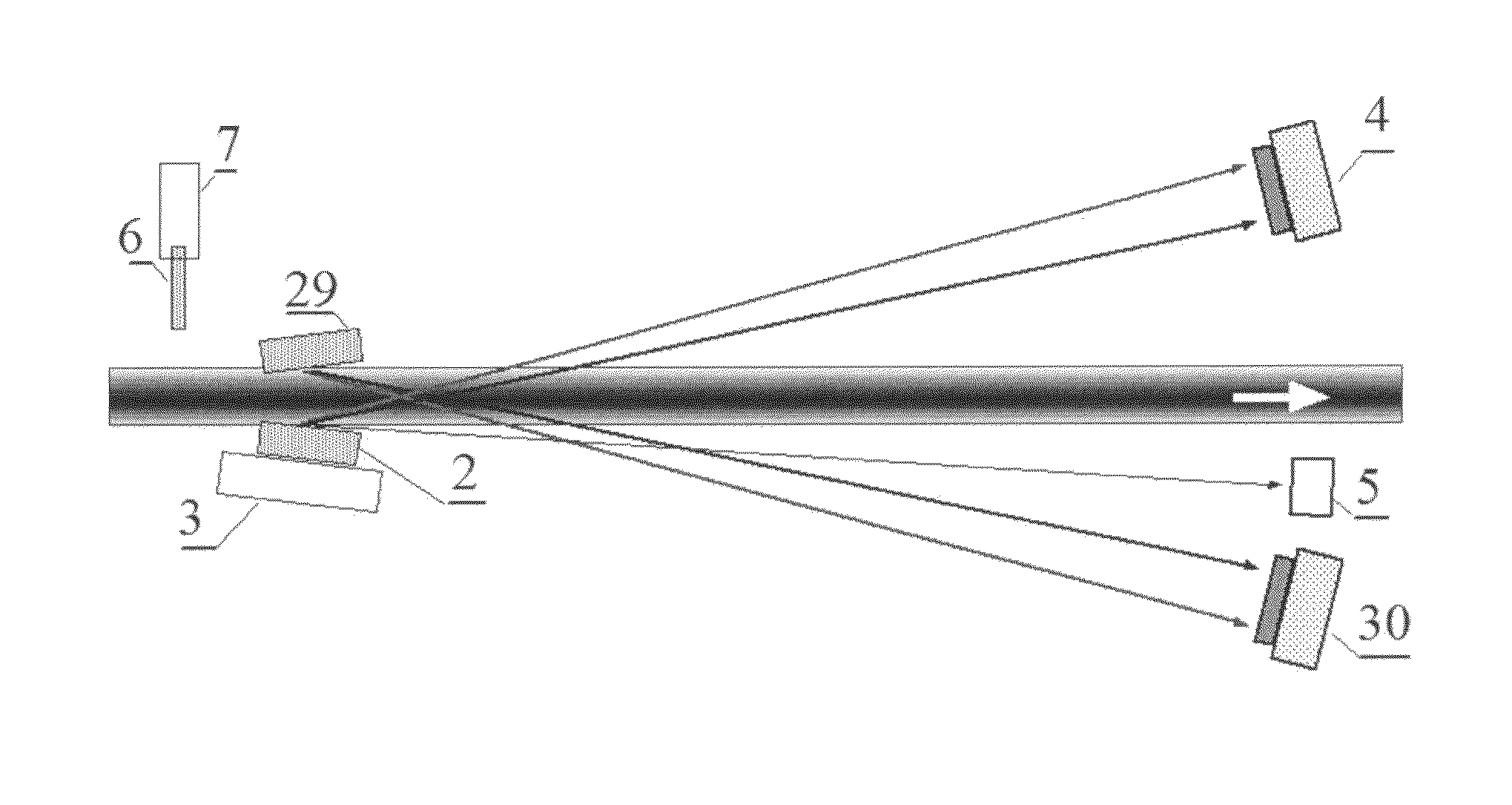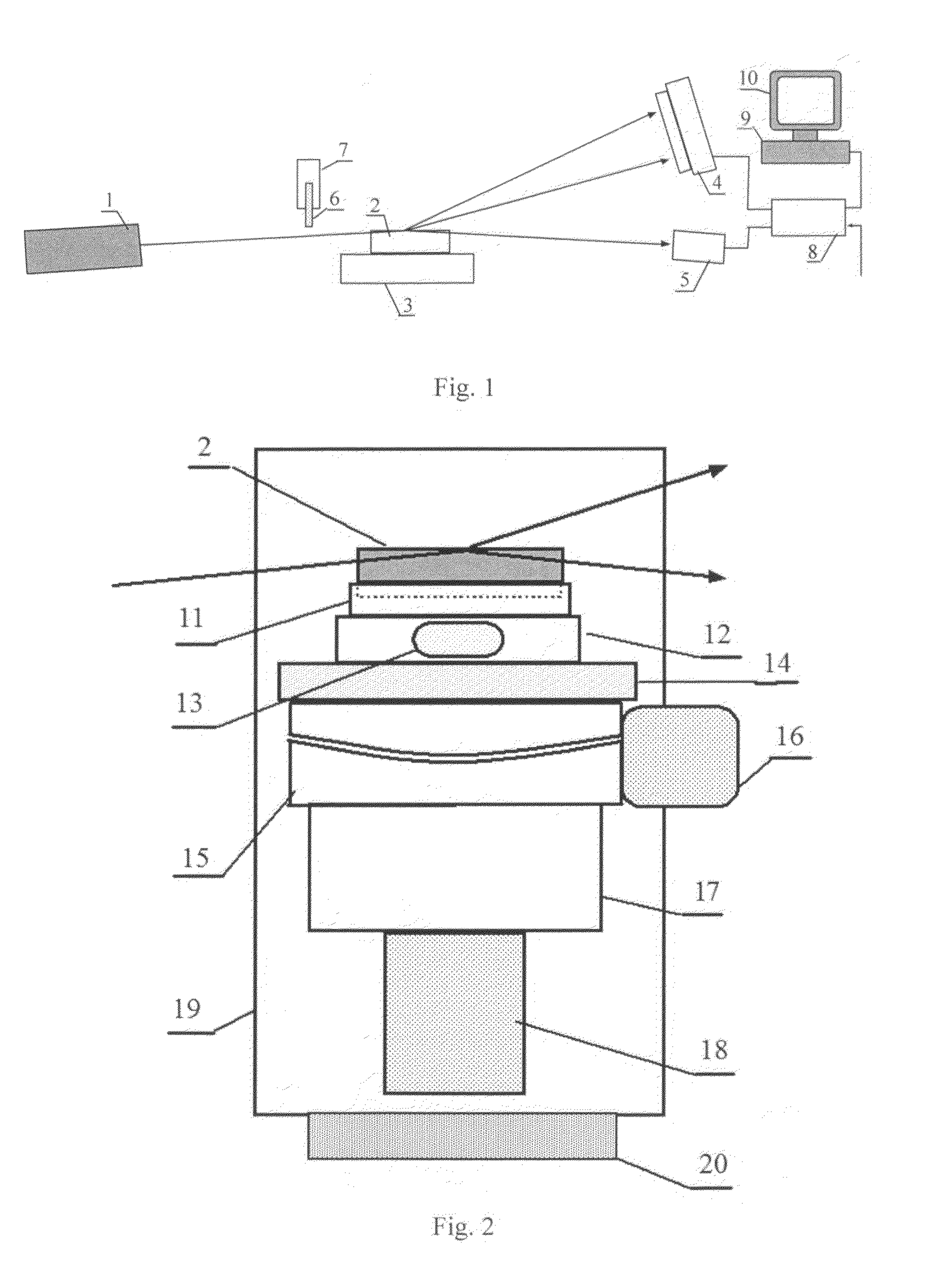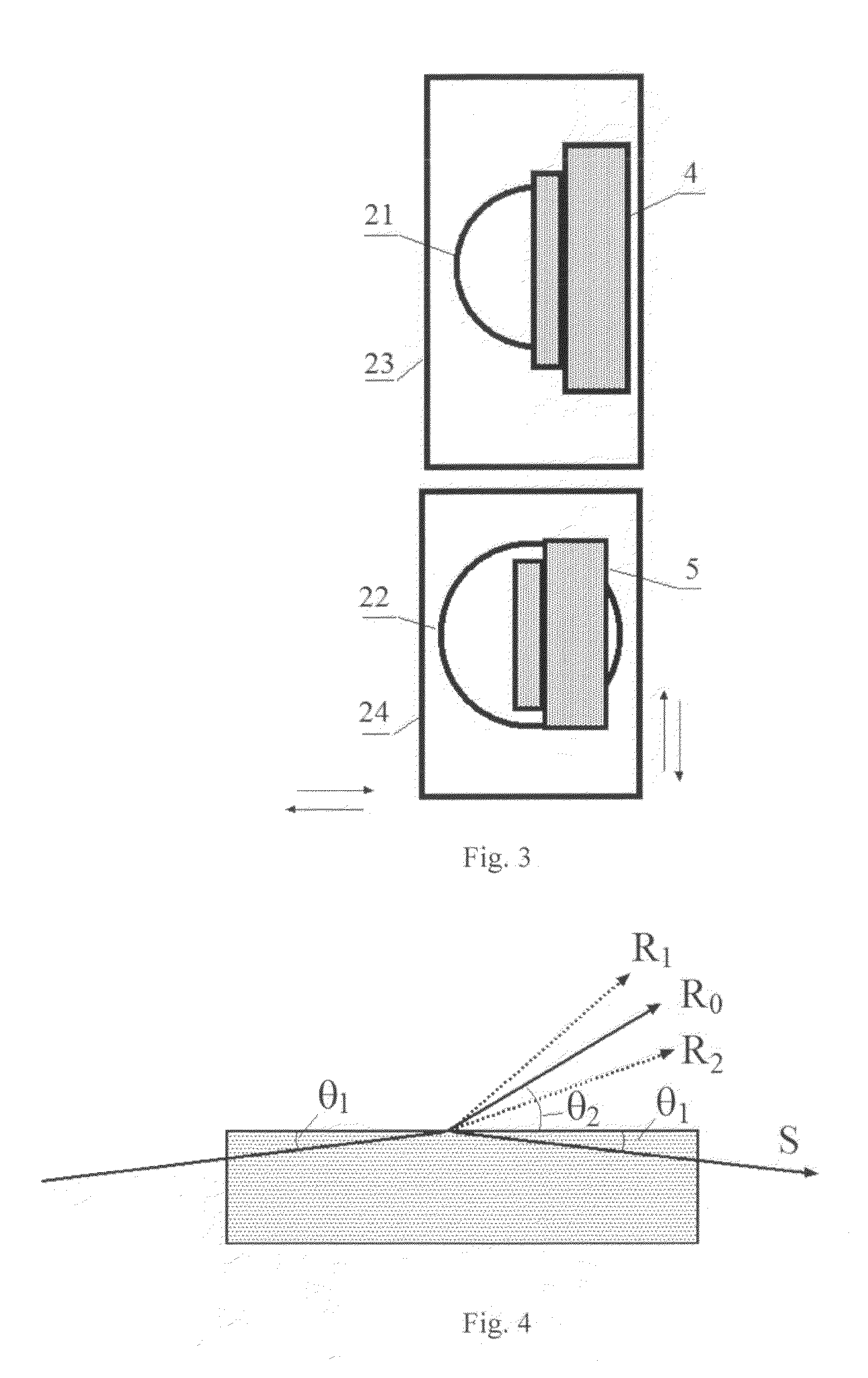X-ray spectrometer
a spectrometer and x-ray technology, applied in the field of xray spectral analysis, can solve the problems of low spectrum measurement speed, spectrometer also precludes studying fast processes, and cannot be reproduced with high accuracy, so as to simplify the adjustment of the spectrometer and accurate measurement of spectral data
- Summary
- Abstract
- Description
- Claims
- Application Information
AI Technical Summary
Benefits of technology
Problems solved by technology
Method used
Image
Examples
Embodiment Construction
[0024]Operation of the X-ray spectrometer is explained with the diagram shown in FIG. 1. This diagram contains an X-ray source 1, a dispersing element 2 in form of a rectangular prism, means of translation 3 of the prism 2 relative to an X-ray beam, a refracted radiation detector 4, an additional detector 5, a sample under study 6, a holder 7 of a sample under study, an electronic unit 8 for the detected signals processing, a computer 9, a monitor 10. Elements 2-5 and 7-10 refer directly to the measuring scheme of the X-ray spectrometer. As a radiation source 1, powerful directed X-ray generators are used preferably, for example, an ondulator, a free electrons X-ray laser, a source based on the inverse Compton scattering effect containing a laser and an electron accelerator. For spectrometric measurements in the wide band the claimed sources can either sequentially change generated energy or the spontaneous part of the generated spectrum can be used. For measurements within the narr...
PUM
 Login to View More
Login to View More Abstract
Description
Claims
Application Information
 Login to View More
Login to View More - R&D
- Intellectual Property
- Life Sciences
- Materials
- Tech Scout
- Unparalleled Data Quality
- Higher Quality Content
- 60% Fewer Hallucinations
Browse by: Latest US Patents, China's latest patents, Technical Efficacy Thesaurus, Application Domain, Technology Topic, Popular Technical Reports.
© 2025 PatSnap. All rights reserved.Legal|Privacy policy|Modern Slavery Act Transparency Statement|Sitemap|About US| Contact US: help@patsnap.com



